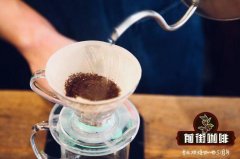How to tell the coffee beans are raw or cooked when they are just roasted?

Professional coffee knowledge exchange more coffee bean information please follow the coffee workshop (Wechat official account cafe_style)
1. The ideal moisture content of raw beans is 1113%. In order to maintain such water content, we must rely on a good storage environment, and the humidity and temperature of the warehouse should be maintained at an average of 50% and 20 °C.
2. Be sure to get rid of the defective beans mixed with raw beans. Even one defective bean may cause the whole batch of coffee to smell moldy, smelly, or vinegar.
3. If you want to cook coffee beans quickly at high temperature, it will cause the dilemma that the outer layer is charred but not yet ripe on the inside. The coffee brewed out of this kind of coffee beans will have a scorched taste and an unpleasant sour smell. On the contrary, if the temperature is too low and the baking time is too long, the beans will lose the flavor of raw beans and the coffee will be tasteless.
4. When baking beans, you need to pay attention to the aroma of coffee beans all the time. If you use perfume or hand cream, please change into overalls, try not to touch coffee beans with your hands, and do not apply any lotion on your hands.
5. The time point at the end of baking beans is called "roasting poing", and the baking point varies with the type of raw beans:
The density of raw beans from Ethiopia and Papua New Guinea is low, so they absorb heat faster, and if you also want to bake to medium-baked ripeness, the baking time will be shorter than other kinds of raw beans. On the contrary, the beans produced in Peru, Colombia and Indonesia with higher density take a longer baking time and deepen the roasting maturity as much as possible in order to maximize the delicacy of coffee beans.
Even if it comes from the same origin and the same coffee farm, coffee may taste very different because of the state and baking conditions of each raw bean, so every step of the process must be paid attention to again and again.
6. After roasting raw beans into coffee beans, not only the color will be significantly different, but also the weight will be significantly reduced. Generally speaking, the ideal weight of coffee beans is about 85% of that of raw beans, and the flavor tends to be sour and sweet.
7. The next step in baking is to clean up the bean shell (chaff) and residue inside the baking machine, mainly with silver film-silver skin (silver skin) that wraps raw beans. If left alone, there may be a fire when baking beans, causing a fire.
8. Pick out the unripe beans (quaker, also known as Quaker beans and Quaker beans). Unbaked raw beans are obviously lighter in color than other beans and are easy to pick out.
9, raise beans, freshly baked coffee beans have a high content of carbon dioxide, so the sour taste is also strong, it is best to let the coffee beans ripe for a day or two, the taste will be better.
10. No matter whether you use computer data acquisition software or not, try to use paper and pen to carefully record the baking time, baker, baking conditions and other information, and create your own baking database.
END
Important Notice :
前街咖啡 FrontStreet Coffee has moved to new addredd:
FrontStreet Coffee Address: 315,Donghua East Road,GuangZhou
Tel:020 38364473
- Prev

How to distinguish the quality of coffee beans | what should be paid attention to in the selection and purchase of coffee beans?
Professional coffee knowledge exchange more coffee bean information Please follow the coffee workshop (Wechat official account cafe_style) choose your favorite roasting method choose your favorite roasting method the aroma and taste of coffee will change with the degree of roasting. Nowadays, most coffees are directly marked with the degree of roasting, so choose the appropriate roasting degree according to your preference.
- Next

Do you know which coffee belongs to black coffee? what are the side effects of drinking black coffee?
Professional coffee knowledge exchange more information about coffee beans Please follow the coffee workshop (Wechat official account cafe_style) Black coffee emphasizes the aroma of the coffee itself. Aroma is not only the life of coffee quality, but also the best expression of coffee production process and roasting technology. The climate, variety, refined treatment, harvest, storage and roasting technology of the consuming country all determine the coffee beans.
Related
- Beginners will see the "Coffee pull flower" guide!
- What is the difference between ice blog purified milk and ordinary milk coffee?
- Why is the Philippines the largest producer of crops in Liberia?
- For coffee extraction, should the fine powder be retained?
- How does extracted espresso fill pressed powder? How much strength does it take to press the powder?
- How to make jasmine cold extract coffee? Is the jasmine + latte good?
- Will this little toy really make the coffee taste better? How does Lily Drip affect coffee extraction?
- Will the action of slapping the filter cup also affect coffee extraction?
- What's the difference between powder-to-water ratio and powder-to-liquid ratio?
- What is the Ethiopian local species? What does it have to do with Heirloom native species?

